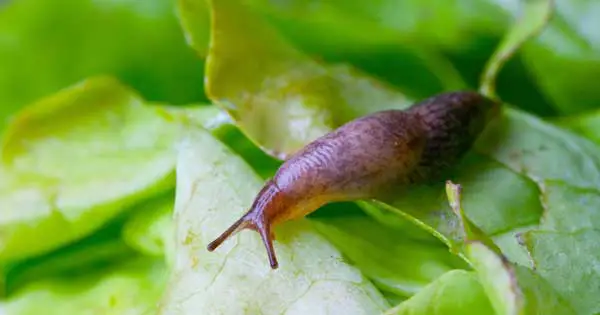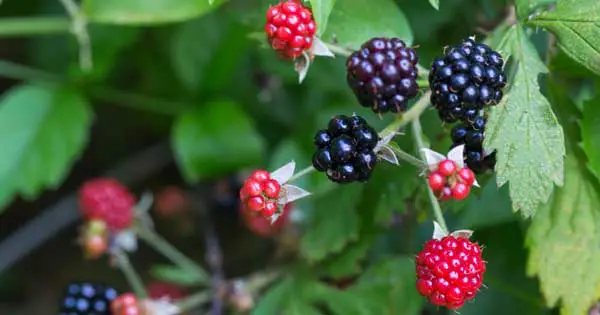Those of us who yearn to ditch the blue pellets and quick-fix chemical sprays in favour of more eco-friendly garden pest controls, should perhaps be taking a biological approach.
Many of us incorporate a variety of plants in our garden to attract beneficial predators such as ladybirds which will gobble up aphid eggs, or hedgehogs, song thrushes and frogs to feast on slugs and snails. They all assist the balance of nature, but sometimes that balance needs a helping hand.

Many organic gardeners have been using nematodes, or microscopic ‘eelworms’, for years.
Nematodes are tiny micro-organisms which occur naturally in the soil where they hunt down and attack pests, with each different nematode having their own specific prey species.
Chemical giant BASF has the largest specialist nematode production facility in the EU and the only one in the UK, breeding trillions of up to five different species of beneficial nematode to create its Nemasys range, and now has products which will treat many common soil-dwelling pests including vine weevil, chafer grubs, slugs, leatherjackets and ant nests.
Nematodes generally come in sealed packs. The contents are mixed with water and applied via a watering can at particular times of year depending on the pest being targeted. Once applied, they will seek out their prey, whether it be slugs, vine weevil or other pests, entering the target’s body and releasing bacteria that will kill it. There is no need to keep children or pets away from treated areas.
The nematodes will then reproduce inside the corpse and create a new generation which will hunt for further prey.
The company has also developed an all-round treatment aimed at fruit and veg growers which tackles the underground larval stage of common veg pests such as carrot fly, sciarid fly, cabbage root fly, sawflies, onion flies and codling moths.
Nemaslug, however, is the company’s bestseller, a product which works on the slugs that you don’t see, those which spend much of the time underground and do serious damage to underground shoots and potatoes.
“They each work on the very simple format that the nematodes deliberately seek out their particular prey pests and kill them – simple as that,” says BASF’s UK sales manager Gavin Wood.
“Treatment can continue throughout the growing season and when the pests have all been wiped out, the level of nematodes in the soil will immediately drop back to the normal concentrations. When temperatures drop at the end of the season, the nematodes will naturally reduce in quantities until the soil warms up again.”
Guy Barter, RHS chief horticultural adviser, agrees that nematodes are probably the most eco-friendly solution to pest control.
“They are an excellent idea because they have no effect on non-targeted organisms, are safe for the user and are organic. The only downside is that they are rather expensive,” he says.
However, Paul Hetherington, director of fundraising and communications at the charity BugLife, points to research that has shown incidence of certain nematodes crossing species, infecting bees as well, so would recommend using them only as a last resort.
For best results
When applying, use a soil thermometer as nematodes require certain soil temperatures to be most effective, depending on which pest you are targeting.
Apply the nematode solution to soil which is already moist. It’s best to water them in in the evening as soil rarely dries out overnight.
Target leatherjackets and chafer grubs in April and October, to coincide with the weaker parts of their life cycles.
Keep sealed packs in the fridge so the nematodes remain inactive, ensuring their good health until you need them. Use the entire packet at one time and don’t store part-used packs.
When applying nematodes to grass or flowerbeds, water well afterwards so that the nematodes are washed into the soil.
See the advice on when it is best to apply each product to target the pest you want to get rid of.
Best of the bunch – Hydrangea

Once out of fashion, hydrangeas have once again come into their own, as gardeners make the most of the more unusual climbing species and the cool white hues. Hydrangea anomala subsp. petiolaris, the climbing hydrangea, is a self-clinger with lacecap heads of creamy-white flowers in summer and will lighten up a shady wall, while H. paniculata ‘Grandiflora’, produces large conical heads of white flowers that flush pink with age in late summer and early autumn. The flowers are also good for drying. Hydrangeas prefer fertile, humus-rich, moisture-retentive soil in partial shade, sheltered from cold, dry winds. Leave the flower heads on them over the winter, which will protect emerging new shoots. Then, in late winter, cut back all sideshoots to within 5-8cm of the main stems.
Good enough to eat – Blackberries

They are so expensive in the shops and yet so easy to find thriving in hedgerows, unfussy about their location, tolerating partial shade and poorly-drained soil, but covering up a tall fence or other eyesore effectively. Once a rampant grower with vicious thorns, you can now buy more compact varieties and even a couple which are thornless. Plant bare-rooted canes in November or December in a spot where you have not grown raspberries or blackberries for a few years. Cultivate a 60cm x 60cm area at each planting site, digging a trench about 30-45cm wide and 7.5cm deep and remove weeds before planting. Add 7.5cm of garden compost and scatter some general fertilizer over the ground before planting. You will need a support system to start it off – the most popular is post-and-wire, where stout posts are erected, on to which wires are attached horizontally and the canes are then tied to the wires with soft twine. Fruits appear between late July and September. Grow Oregon Thornless if you don’t want to get scratched, or Fantasia, which bears heavy yields of huge fruits.
What to do this week
Pinch out the tops of outdoor tomatoes as any further flowers developing now will not form ripe fruit before autumn
Finish summer pruning apple trees
Trim back laurel hedges to remove complete shoots
Pick dahlias reguarly and continue tying in stems to their supports
Make sure camellias don’t dry out as they will be forming flower buds now to bloom next spring
Prune rambler roses when they have finished flowering
Earth up trench celery to blanch stems
Water apples, pears and other fruits to help increase their size
Remove suckers from the roots of roses and other fruiting trees
Keep the greenhouse well ventilated, opening doors and windows during the day but closing them on cool nights.
newsletter.html”]
